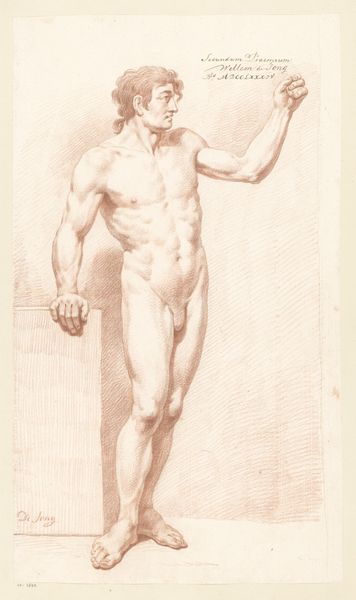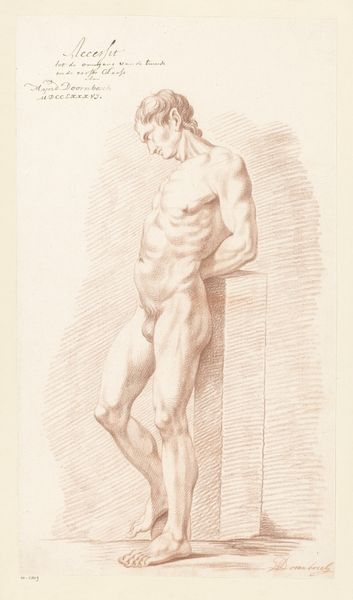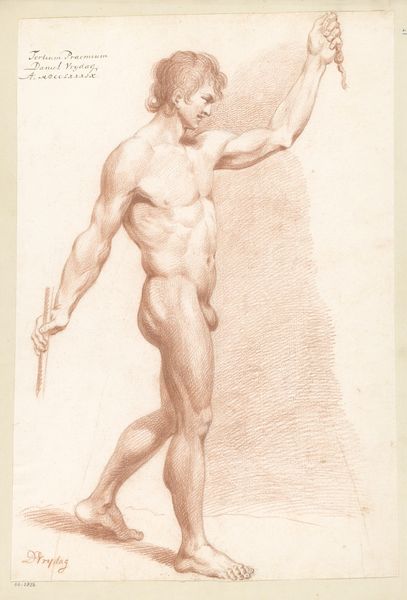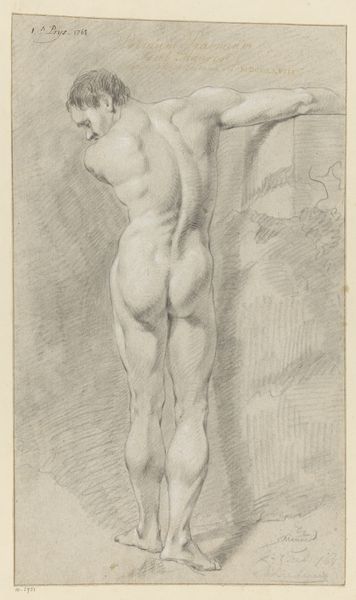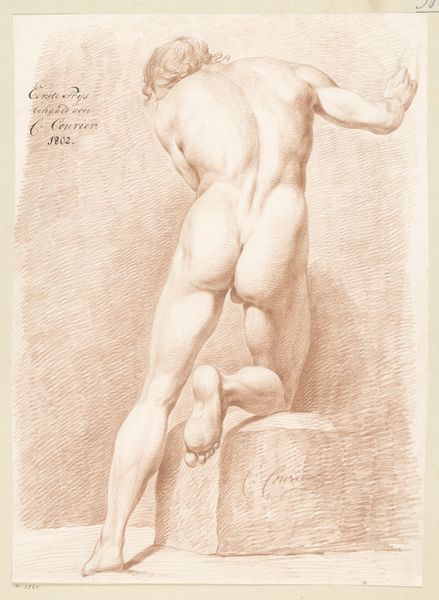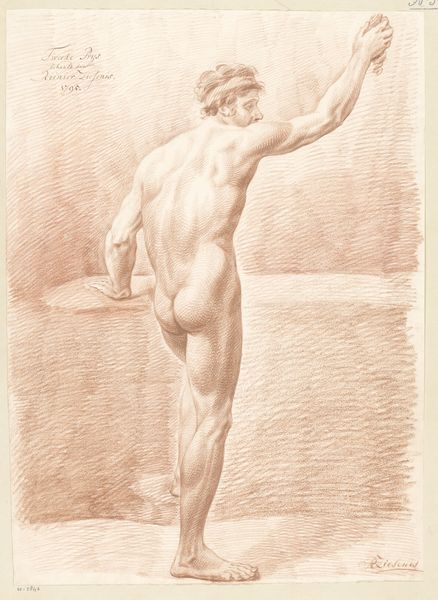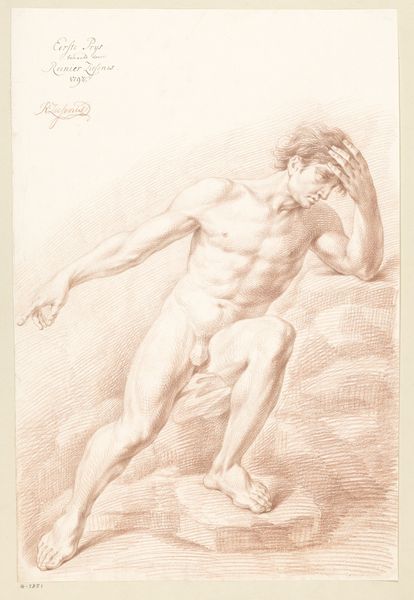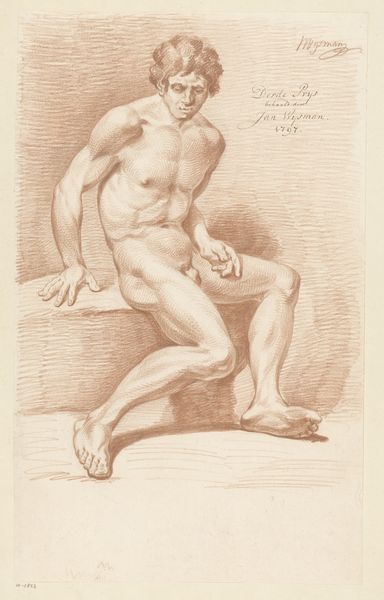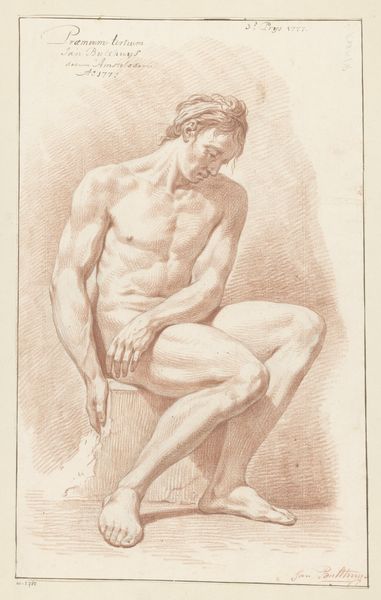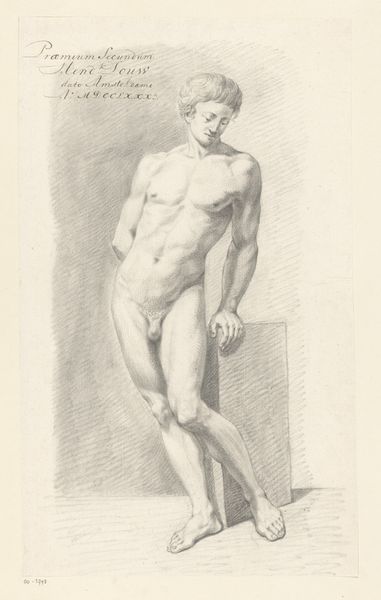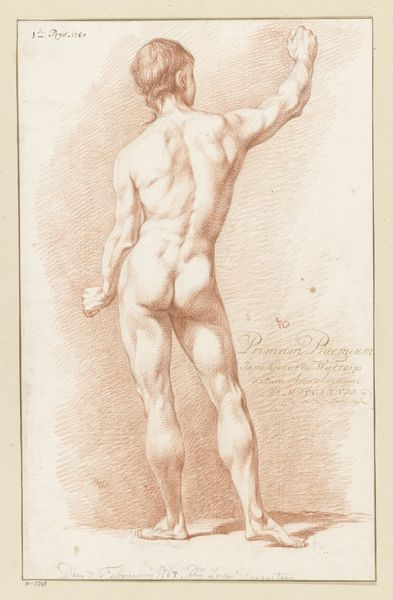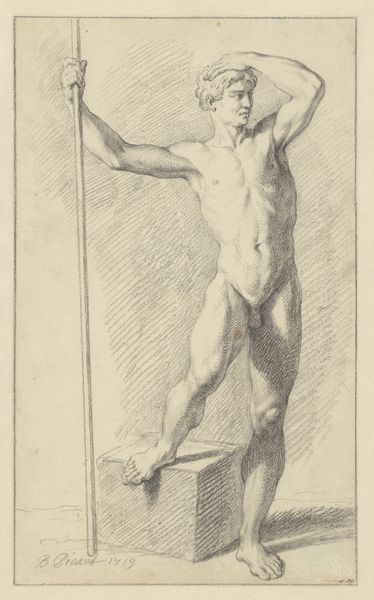
Staand mannelijk naakt, van opzij gezien (3e prijs 1801) Possibly 1801 - 1818
0:00
0:00
drawing, pencil, engraving
#
portrait
#
pencil drawn
#
drawing
#
pencil sketch
#
classical-realism
#
charcoal drawing
#
figuration
#
pencil drawing
#
pencil
#
portrait drawing
#
pencil work
#
academic-art
#
nude
#
engraving
Dimensions: height 508 mm, width 294 mm
Copyright: Rijks Museum: Open Domain
Curator: I’m drawn to the somber mood in this drawing; the way light etches out the figure feels like it’s unearthing something very vulnerable. Editor: That melancholic air certainly strikes you immediately, doesn't it? Here we have, from Izaak Riewert Schmidt, an artwork entitled "Standing Male Nude, Seen From the Side." The inscription on the piece suggests that this was the third prize awarded in 1801, though it may date sometime between then and 1818. Curator: A prize piece. It’s interesting to think of art as competition. This engraving is meticulously rendered, but look closer – he’s almost awkwardly positioned. It's an amazing academic study, of course, but with an unusual, internalized emotion. Almost like he doesn’t want to be observed, doesn't want to win the price! Editor: The classical contrapposto is certainly there in the pose, offering a play of weight and balance, tension, and relaxation throughout the body, but its classical foundations don't erase a visible unease. What I find most interesting is the economy of means here. Schmidt achieves incredible volume and modulation with such delicate hatching. Curator: And just that single color! It imbues the artwork with so much warmth, like aged paper imbued with memories. You almost want to reach out and feel the warmth. It’s not perfect, it's raw humanity presented. A lot of what I read about are stories of imperfection; maybe why it is so easy for me to get absorbed by it! Editor: The nude as a subject allowed the artist to explore an idealized form through an artistic problem, with which Schmidt won the accolade here; the form rendered just so in material exploration between the engraver and model—but its beauty hinges also on the imperfections you keenly perceive, in its almost bashful sentiment. Curator: It leaves one pondering beauty itself; this feels much more interesting than empty ideals. The mood, technique, color... they come together for something complex. It sticks with you. Editor: Indeed. Schmidt shows that formalism need not only concern the 'form'; but feeling.
Comments
No comments
Be the first to comment and join the conversation on the ultimate creative platform.
